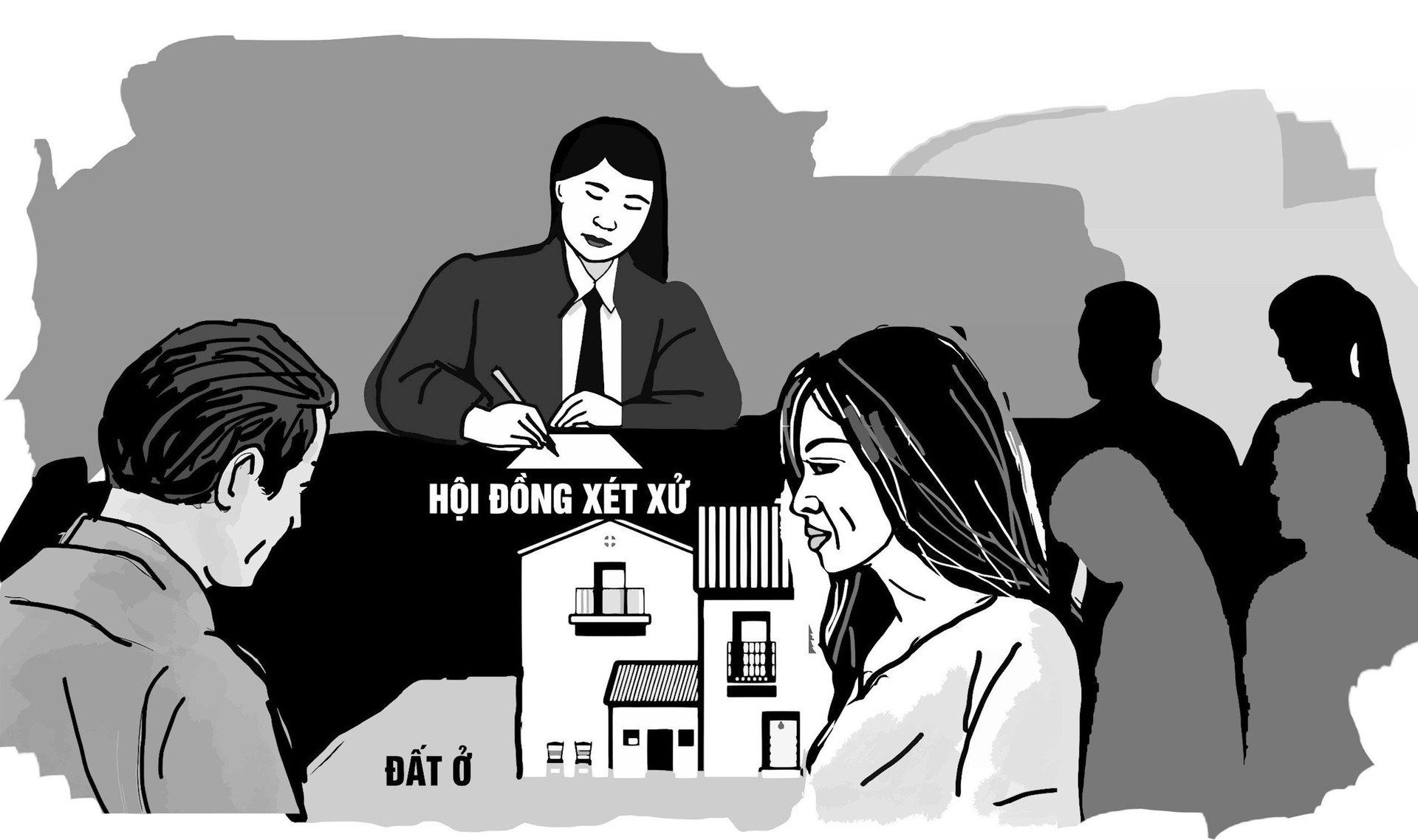After more than 40 years of marriage, Mr. and Mrs. D.HT and NTK in Nam Sach went to court for divorce. The wife asked the court to divide the couple's land among their 4 children, but the court rejected her request.

Recently, the People's Court of Hai Duong province opened a public first-instance trial of a dispute over division of common property after divorce.
Mr. D.HT and Ms. NTK in Nam Sach district got married in 1980 and divorced according to the judgment of the People's Court of Nam Sach district. After the divorce, because the two could not divide their common property, Mr. T. requested the court to resolve the division of their common property, including: A plot of land with an area of 112.5m22in An Dong village, An Binh commune (Nam Sach) with 1/2 of the value of the 3-storey house on the land according to the certificate of land use rights and household appliances confirmed by both parties.
Mr. T. requested the court to divide the common property of Mr. and Mrs. K. according to the provisions of law. Ms. K. determined that the land plot is the common property of Mr. T., her and her 4 children, so Mr. T.'s property is worth 1/6 of the land plot; the value of 1/2 of the house on the land and some household items as agreed by Mr. and Mrs. K. She requested to cancel the land use right certificate in the name of the user, Mr. and Mrs. K., issued by the People's Committee of Nam Sach district on March 31, 2008 because it was issued to a missing owner.
The Trial Panel reviewed and evaluated the contents of the origin of this disputed land plot. On March 31, 2008, Mr. T. and Ms. K. were granted a land use right certificate for a land plot of 112.5 square meters by the People's Committee of Nam Sach district. According to Mr. T., the money to buy the land was saved by him and Ms. K. during their marriage. According to Ms. K. and her four children, it was the common money of the whole family working together while living in Lam Dong province.
The court found that the parties in the case all determined that when the family moved from the North to the Lam Dong new economic zone (in 1999), the whole family lived together and did business together. The evidence was acknowledged by the plaintiffs, defendants and those with related rights and obligations, so there was no need to prove it. At the time the whole family lived and worked in the new economic zone, the grandparents' children were only 14-19 years old. The children lived with their grandparents for a while and then each had their own family and lived separately. Mr. T. and Mrs. K. all had their own accommodation arranged by Mr. T. and Mrs. K., which was confirmed by the parties in the statements in the file.
Thus, it can be determined that although Mr. T. and Mrs. K.'s children had a period of time working together with their grandparents and had contributed to the common property of Mr. T. and Mrs. K. when they were in Lam Dong province. However, they were all given a significant portion of the family's common property by their parents to build their own lives. Moreover, the land that the parties are disputing over was purchased in 2008 for 110 million VND, which is not much compared to the amount of money that Mr. T. and Mrs. K. spent in 2009 to buy the land for their children... Therefore, the Trial Panel determined that although Mr. T. and Mrs. K.'s children had contributed to building the common property with their parents, they had also received some financial support from their parents to build their own place to live, so they did not contribute anything to the common property of Mr. T. and Mrs. K.
From the above analysis, the Trial Panel determined that the above land plot is the joint property of Mr. T. and Ms. K. and has nothing to do with the children.
Therefore, the Trial Panel accepted Mr. T's request to file a lawsuit regarding the division of his and Ms. K's joint property. The Court determined the right to use the land plot with an area of 112.5m2in An Dong village, An Binh commune, worth more than 1.76 billion VND, is the common property of Mr. T. and his wife, not the common property with their children. Therefore, for this plot of land, Mr. T. and Ms. K. each receive half, equivalent to 883 million VND. The remaining assets on the land are divided equally among Mr. T., Ms. K. and the other 2 children as originally proposed.
It is known that when Mr. T. and Ms. K. divorced, they asked the court to agree on the division of assets. Ms. K. asked Mr. T. to transfer all assets to his son, but Mr. T. did not agree and sent a petition to the court requesting the division of assets according to the law.
In fact, the number of divorces and property disputes has increased compared to before. Couples need to find out information about determining common property and separate property before and during marriage, both to ensure their own rights and to avoid disputes, leading to sad consequences after they cannot live together.
NGOC MAI